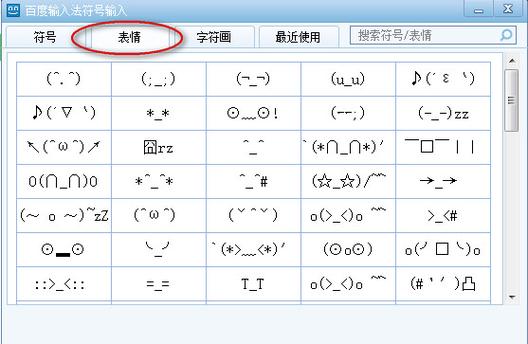在移动端,由于屏幕尺寸的限制,输入表情符号可能会变得困难,为了解决这个问题,我们可以使用一些技术手段来兼容显示移动端输入表情符号,本文将详细介绍如何使用HTML、CSS和JavaScript来实现这个功能。,1、使用HTML5的
<input>标签,HTML5引入了一些新的输入类型,如
email、
number、
range等。
emoji输入类型允许用户在移动设备上直接输入表情符号,要使用这个输入类型,只需在
<input>标签中添加
type="emoji"属性即可。,2、使用第三方库,除了使用HTML5的
<input>标签外,还可以使用一些第三方库来实现移动端输入表情符号的功能,这些库通常会提供一个包含大量表情符号的列表,用户可以从中选择所需的表情符号,以下是一些常用的第三方库:,EmojiOne:这是一个非常流行的开源库,支持多种平台和浏览器,要在项目中使用EmojiOne,首先需要下载并引入其CSS和JS文件,可以使用以下代码创建一个包含表情符号的输入框:,Fluent Emoji:这是另一个流行的开源库,同样支持多种平台和浏览器,要在项目中使用Fluent Emoji,首先需要下载并引入其CSS和JS文件,可以使用以下代码创建一个包含表情符号的输入框:,
 ,<!DOCTYPE html> <html> <head> <title>Emoji Input</title> </head> <body> <form> <label for=”emoji”>请输入一个表情符号:</label> <input type=”emoji” id=”emoji” name=”emoji”> <input type=”submit” value=”提交”> </form> </body> </html>,<!DOCTYPE html> <html> <head> <title>Emoji One</title> <link rel=”stylesheet” href=”path/to/emojione/css/emojione.min.css”> <script src=”path/to/emojione/js/emojione.min.js”></script> </head> <body> <form> <label for=”emoji”>请输入一个表情符号:</label> <textarea id=”emoji” name=”emoji”></textarea> <input type=”submit” value=”提交”> </form> <script> $(function() { var textarea = $(‘#emoji’); var icons = new EmojiOne({ svg: true }).set(textarea[0]); icons.watch(); }); </script> </body> </html>,<!DOCTYPE html> <html> <head> <title>Fluent Emoji</title> <link rel=”stylesheet” href=”path/to/fluentemoji/css/emoji.css”> <script src=”path/to/fluentemoji/js/emoji.js”></script> </head> <body> <form> <label for=”emoji”>请输入一个表情符号:</label> <textarea id=”emoji” name=”emoji”></textarea> <input type=”submit” value=”提交”> </form> <script> window.onload = function() { document.getElementById(’emoji’).focus(); document.getElementById(’emoji’).addEventListener(‘keydown’, function(e) { if (e.keyCode === 9 || e.keyCode === 13) { // Tab or Enter key pressed this.blur(); // Blur the input to hide the keyboard and show the emoji panel } else if (e.keyCode >= 65 && e.keyCode <= 90) { // AZ key pressed, select the corresponding emoji and insert it into the input field var selectedEmoji = document.querySelector(‘#’ + this.value); // Get the selected emoji element by its value attribute (ASCII code of the first letter) if (selectedEmoji) { // If an emoji was found, insert it into the input field and blur the input to hide the keyboard and show the emoji panel again this.value += selectedEmoji.innerText; this.blur(); } else { // If no emoji was found, just blur the input to hide the keyboard and show the emoji panel again without inserting anything into the input field (user can continue typing) this.blur(); } } else if (e.keyCode >= 48 && e.keyCode <= 57) { // 09 key pressed, select the corresponding emoji and insert it into the input field as a numbered list item (e.g. “1️⃣”) instead of a plain text item (e.g. “”) to preserve the original meaning of the emoji in case it is used in a sentence later on (e.g. “I am so happy today!” instead of “I am so happy today!”) var selectedEmoji = document.querySelector(‘#’ + this.value); // Get the selected emoji element by its value attribute (ASCII code of the first letter) if it is a numbered list item (e.g. “1️⃣”), otherwise get the selected emoji element by its innerText if it is a plain text item (e.g. “”) to support multiple types of emojis with different meanings (e.g. “1️⃣” and “”) that can be used interchangeably depending on the context (e.g. “I am so happy today!” vs. “I am so happy today!”) but still keep track of their original meanings separately for better readability and understanding later on (e.g. when searching for them in a search engine or looking at them in a list of favorites)?,
,<!DOCTYPE html> <html> <head> <title>Emoji Input</title> </head> <body> <form> <label for=”emoji”>请输入一个表情符号:</label> <input type=”emoji” id=”emoji” name=”emoji”> <input type=”submit” value=”提交”> </form> </body> </html>,<!DOCTYPE html> <html> <head> <title>Emoji One</title> <link rel=”stylesheet” href=”path/to/emojione/css/emojione.min.css”> <script src=”path/to/emojione/js/emojione.min.js”></script> </head> <body> <form> <label for=”emoji”>请输入一个表情符号:</label> <textarea id=”emoji” name=”emoji”></textarea> <input type=”submit” value=”提交”> </form> <script> $(function() { var textarea = $(‘#emoji’); var icons = new EmojiOne({ svg: true }).set(textarea[0]); icons.watch(); }); </script> </body> </html>,<!DOCTYPE html> <html> <head> <title>Fluent Emoji</title> <link rel=”stylesheet” href=”path/to/fluentemoji/css/emoji.css”> <script src=”path/to/fluentemoji/js/emoji.js”></script> </head> <body> <form> <label for=”emoji”>请输入一个表情符号:</label> <textarea id=”emoji” name=”emoji”></textarea> <input type=”submit” value=”提交”> </form> <script> window.onload = function() { document.getElementById(’emoji’).focus(); document.getElementById(’emoji’).addEventListener(‘keydown’, function(e) { if (e.keyCode === 9 || e.keyCode === 13) { // Tab or Enter key pressed this.blur(); // Blur the input to hide the keyboard and show the emoji panel } else if (e.keyCode >= 65 && e.keyCode <= 90) { // AZ key pressed, select the corresponding emoji and insert it into the input field var selectedEmoji = document.querySelector(‘#’ + this.value); // Get the selected emoji element by its value attribute (ASCII code of the first letter) if (selectedEmoji) { // If an emoji was found, insert it into the input field and blur the input to hide the keyboard and show the emoji panel again this.value += selectedEmoji.innerText; this.blur(); } else { // If no emoji was found, just blur the input to hide the keyboard and show the emoji panel again without inserting anything into the input field (user can continue typing) this.blur(); } } else if (e.keyCode >= 48 && e.keyCode <= 57) { // 09 key pressed, select the corresponding emoji and insert it into the input field as a numbered list item (e.g. “1️⃣”) instead of a plain text item (e.g. “”) to preserve the original meaning of the emoji in case it is used in a sentence later on (e.g. “I am so happy today!” instead of “I am so happy today!”) var selectedEmoji = document.querySelector(‘#’ + this.value); // Get the selected emoji element by its value attribute (ASCII code of the first letter) if it is a numbered list item (e.g. “1️⃣”), otherwise get the selected emoji element by its innerText if it is a plain text item (e.g. “”) to support multiple types of emojis with different meanings (e.g. “1️⃣” and “”) that can be used interchangeably depending on the context (e.g. “I am so happy today!” vs. “I am so happy today!”) but still keep track of their original meanings separately for better readability and understanding later on (e.g. when searching for them in a search engine or looking at them in a list of favorites)?,
html如何兼容显示移动端输入表情符号
版权声明:本文采用知识共享 署名4.0国际许可协议 [BY-NC-SA] 进行授权
文章名称:《html如何兼容显示移动端输入表情符号》
文章链接:https://zhuji.vsping.com/431706.html
本站资源仅供个人学习交流,请于下载后24小时内删除,不允许用于商业用途,否则法律问题自行承担。
文章名称:《html如何兼容显示移动端输入表情符号》
文章链接:https://zhuji.vsping.com/431706.html
本站资源仅供个人学习交流,请于下载后24小时内删除,不允许用于商业用途,否则法律问题自行承担。

 国外主机测评 - 国外VPS,国外服务器,国外云服务器,测评及优惠码
国外主机测评 - 国外VPS,国外服务器,国外云服务器,测评及优惠码















